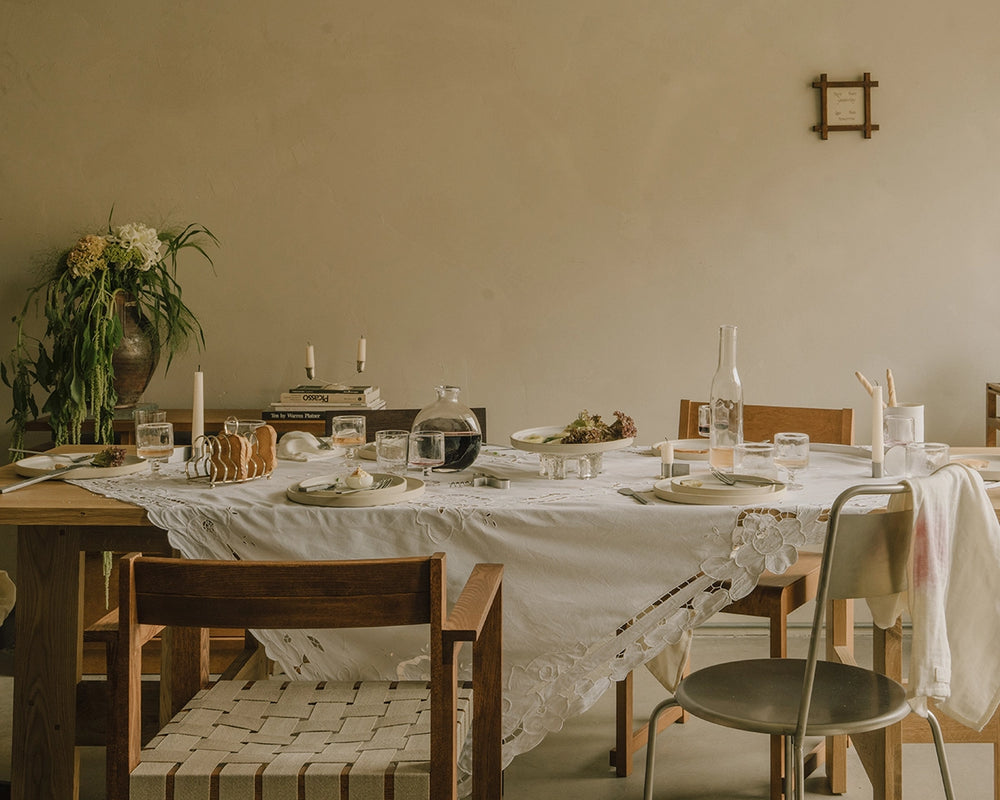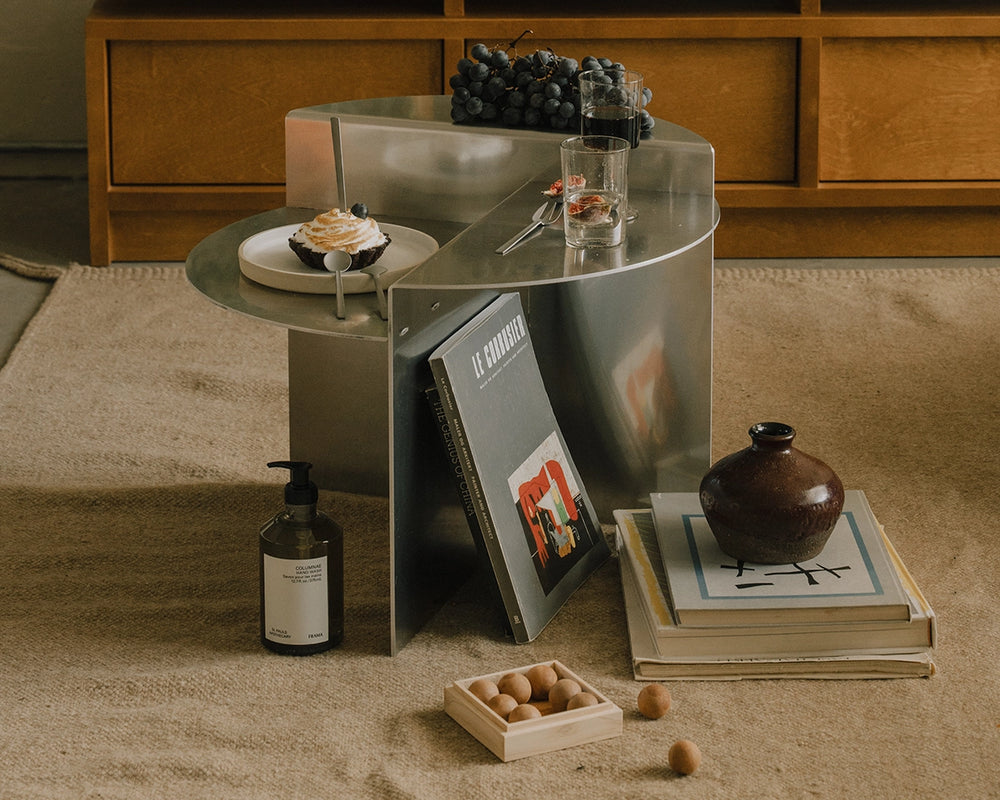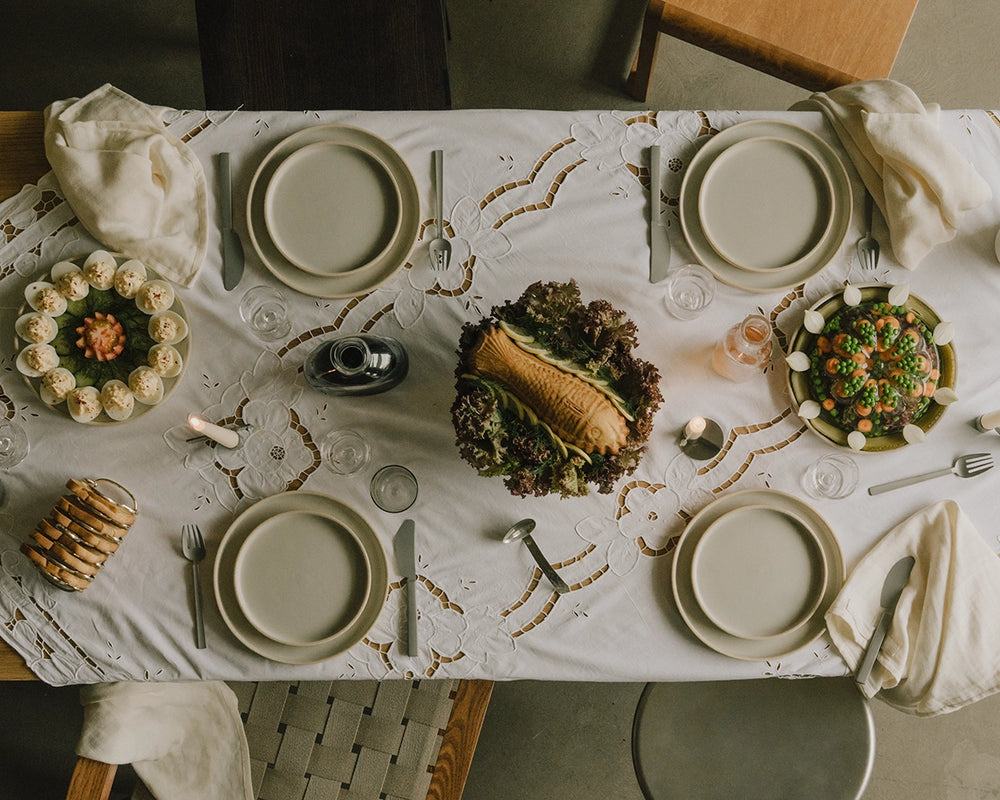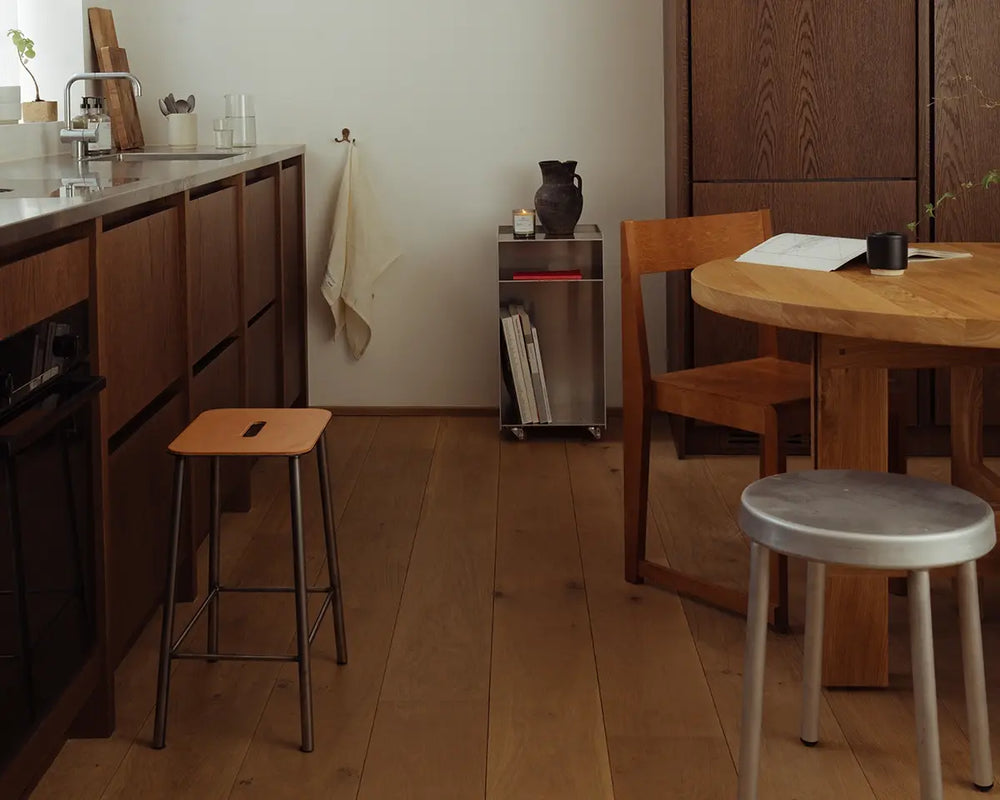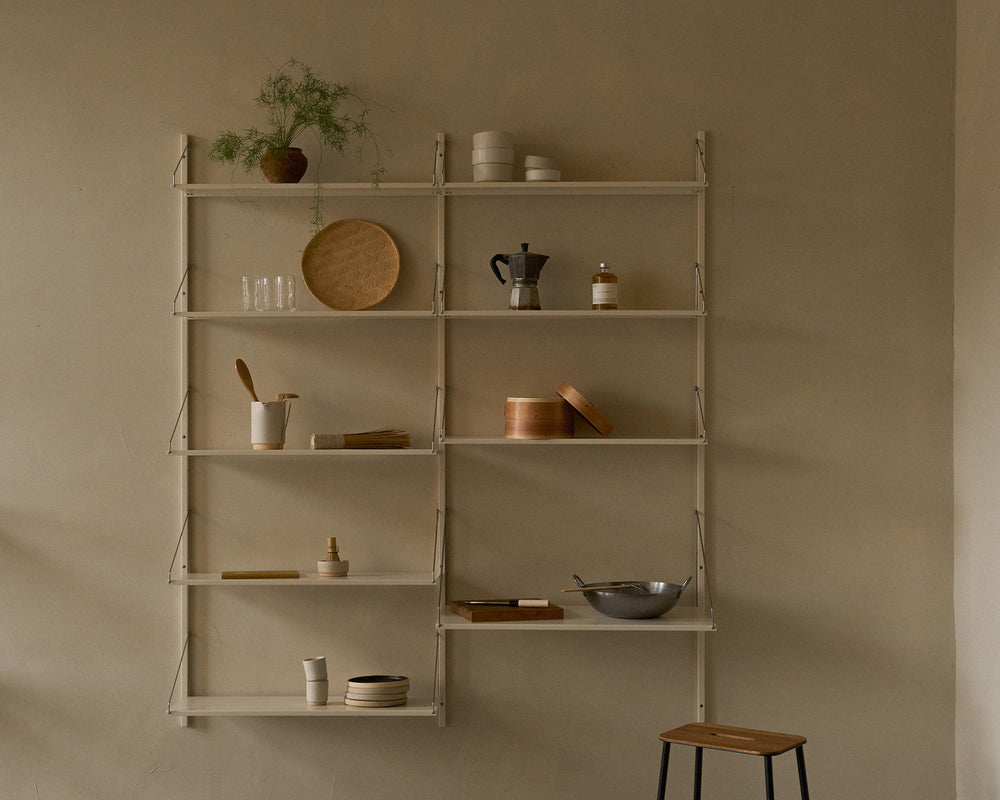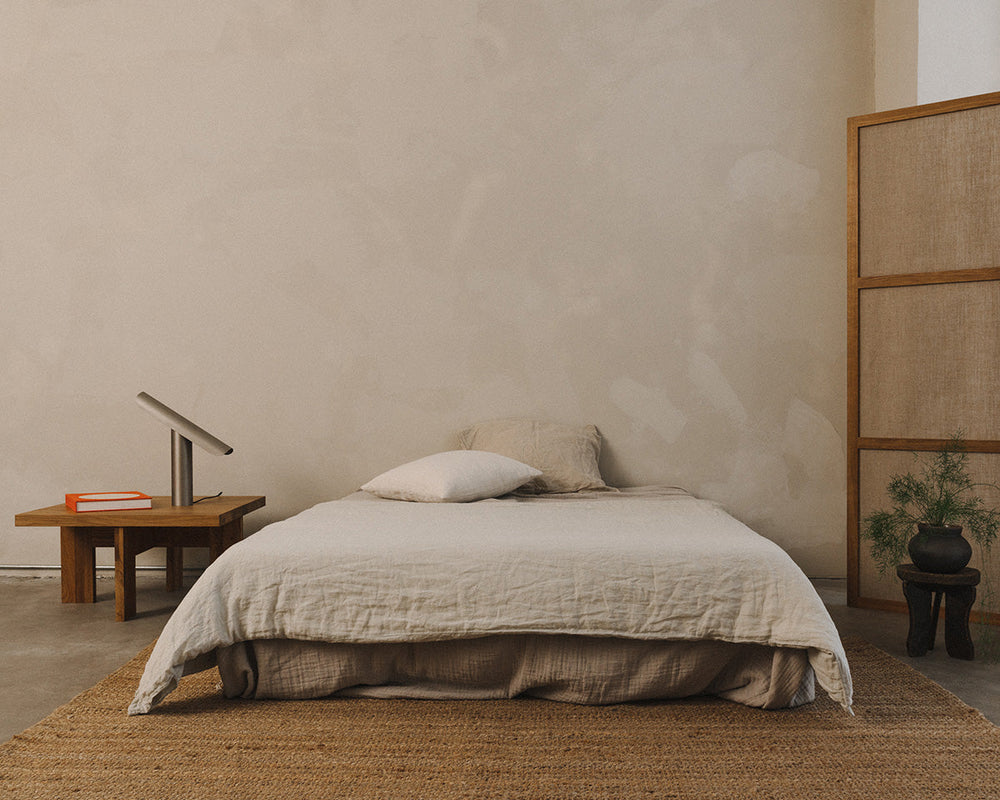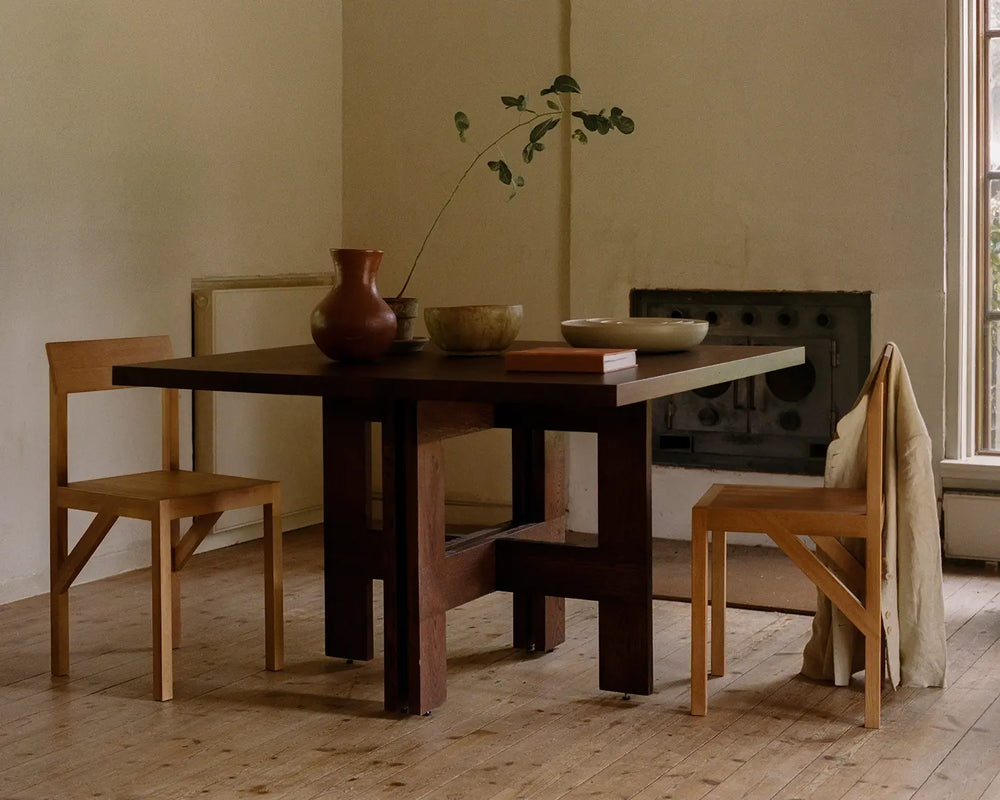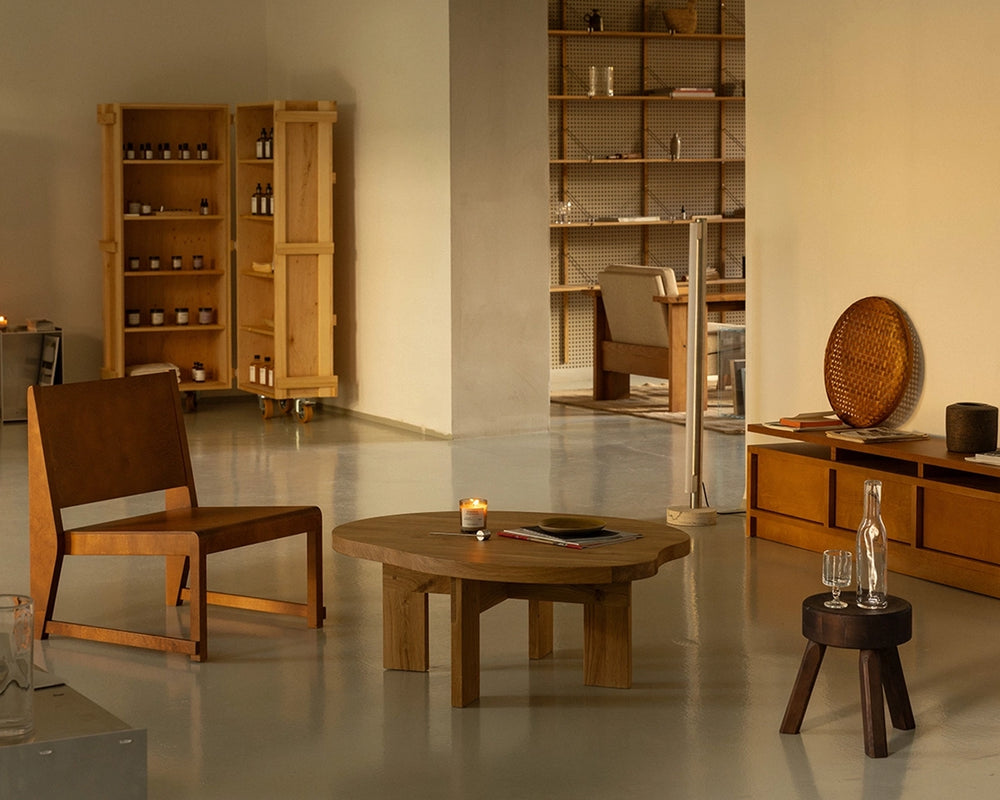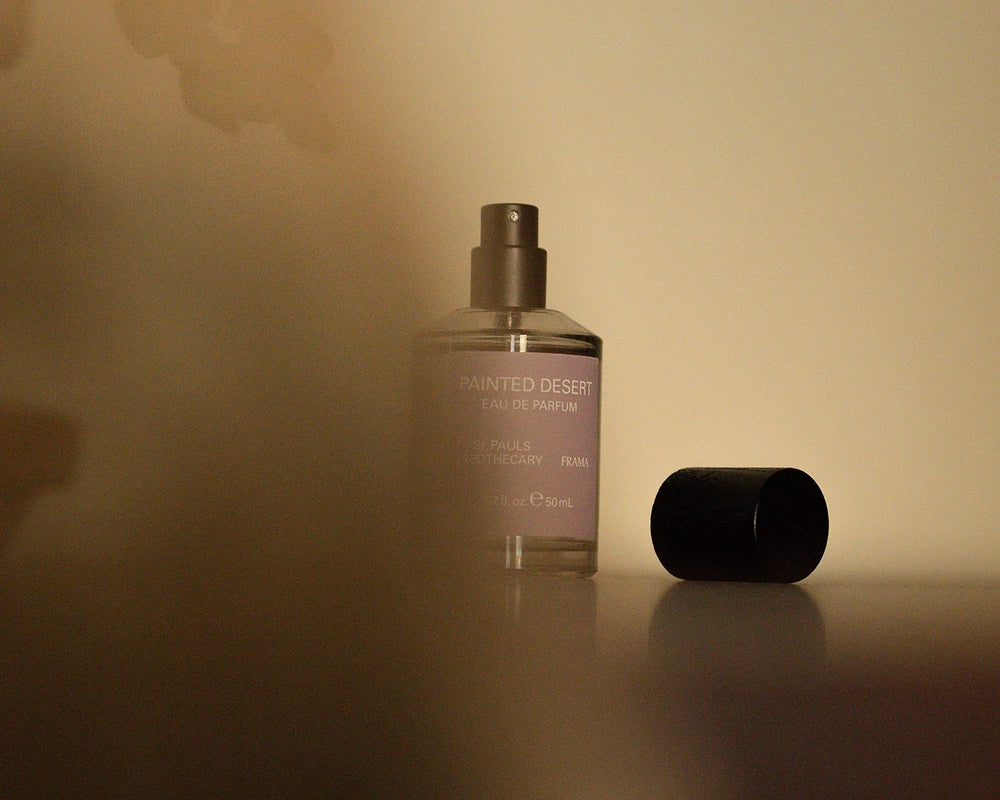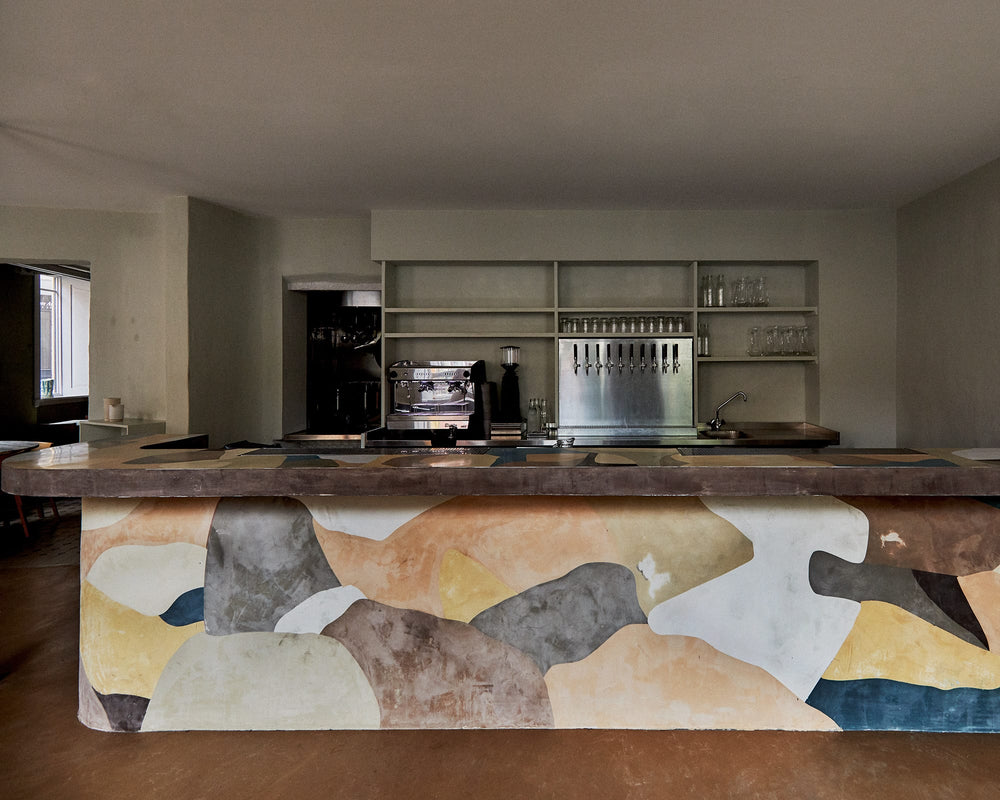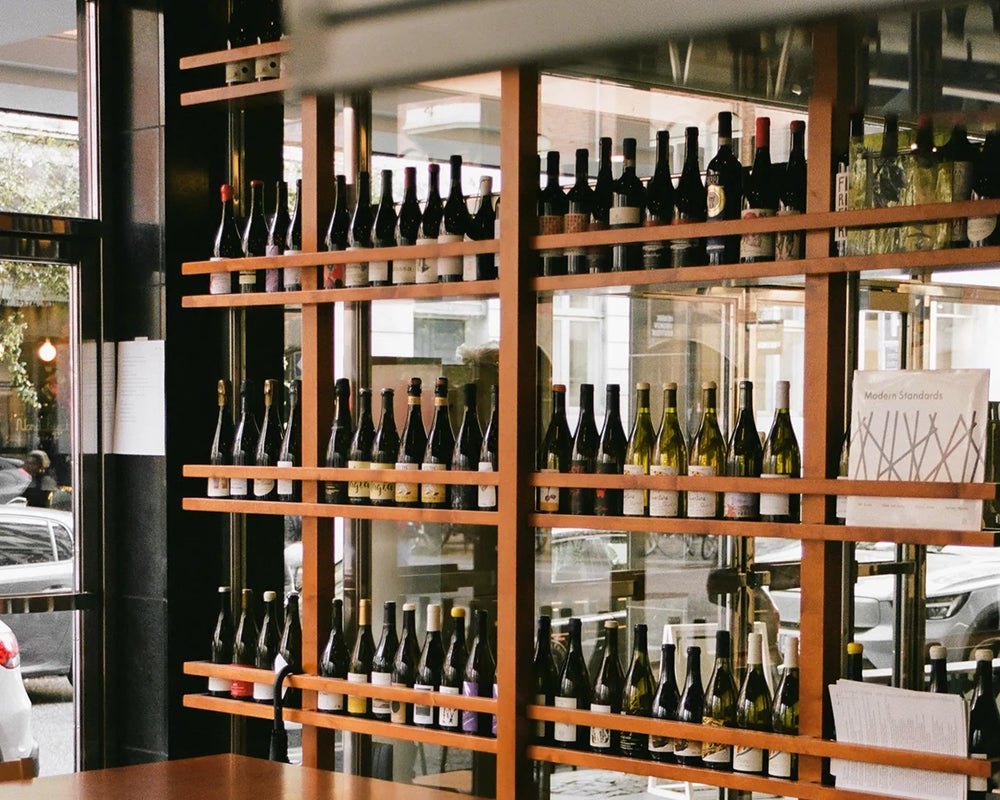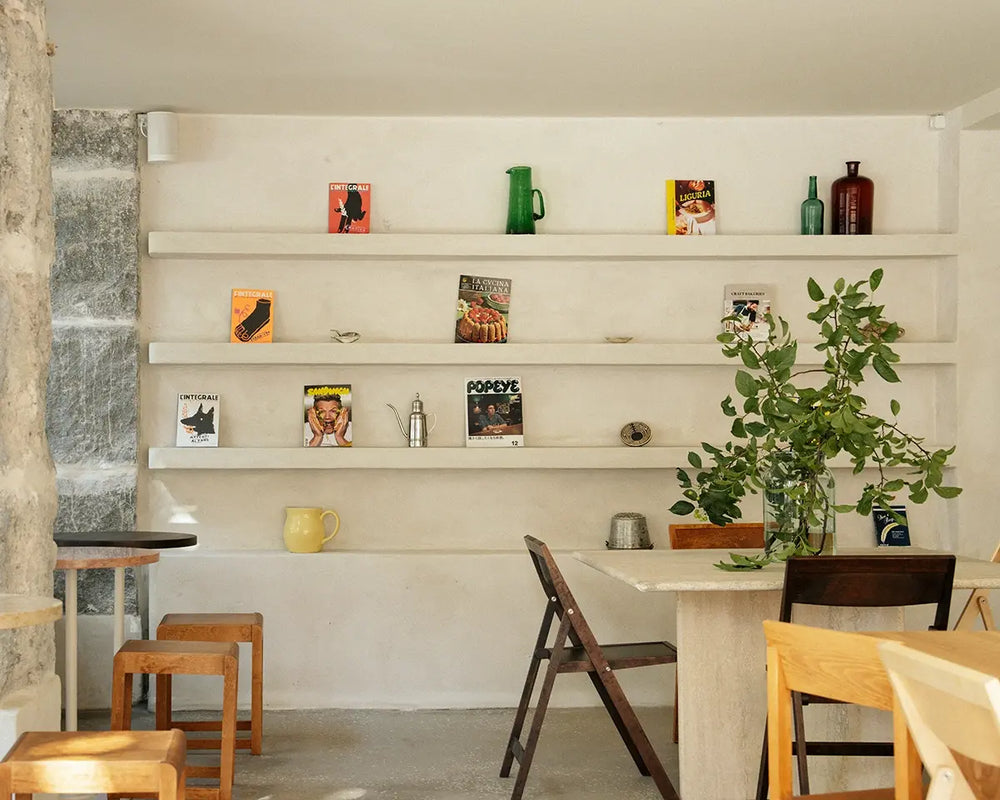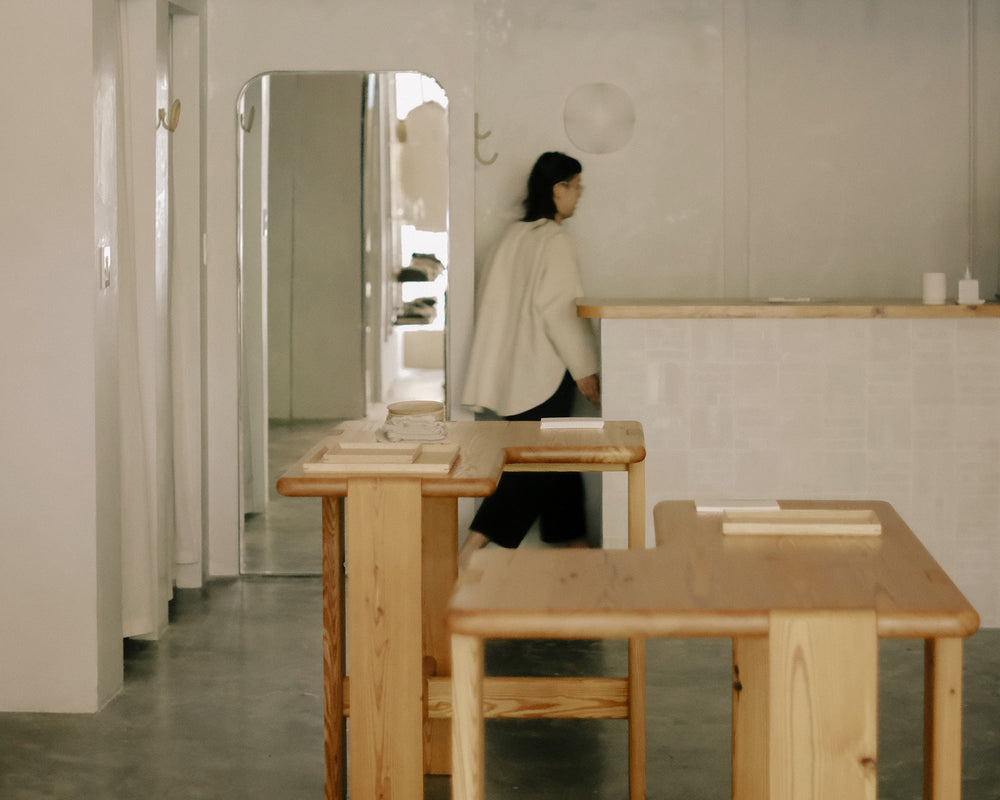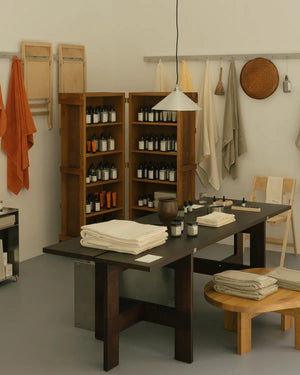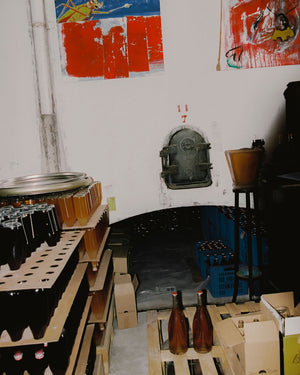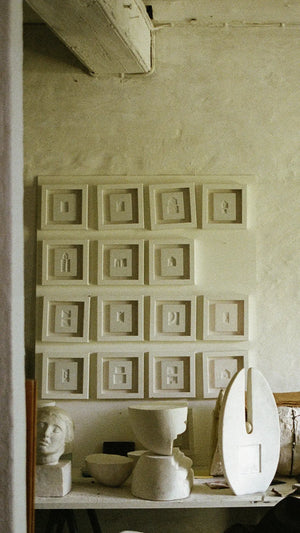
Personal Canvas: Sys Svinding
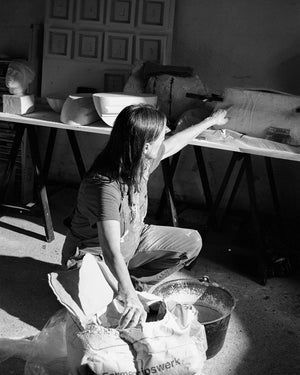
Whether weaving, glassblowing, winemaking—or sculpting—the common thread in the series lies in human hands and tradition, and Svinding’s practice illustrates the power of tactile work and texture in art and design. Today, Svinding’s work is most characterized by large sculptural pieces in stone like granite or diabase, but when she began her education in the arts, her turn to the material was unplanned.
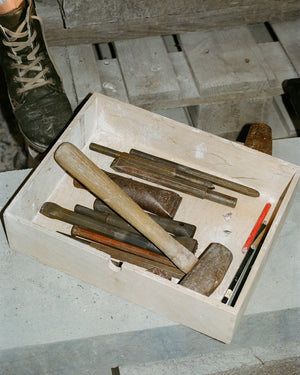
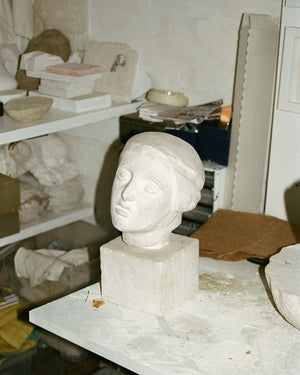
Svinding’s first mentor at school was the late Japanese sculptor Jun-Ichi Inoue, who tasked her with splitting a large piece of granite in two on her first day as his student. Svinding, a young student at the time, rose to the occasion and a mentor-apprentice relationship began that would guide her education and her practice to this day. As she describes it, “the first day with the stone tool in my hands, I knew I had found my material,” and from there she went on to study and work in Italy in Pietrasanta and Carrara—cities with storied histories of marble and sculpture, whose spaces exude stories from centuries past with Michelangelo and Fonseca, and defining what it means to work with an unforgiving yet inspiring natural material like stone.
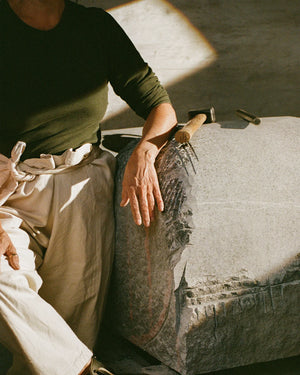
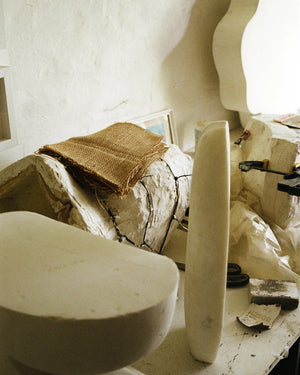
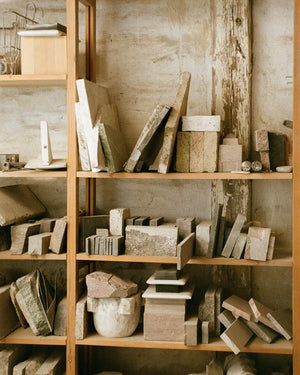
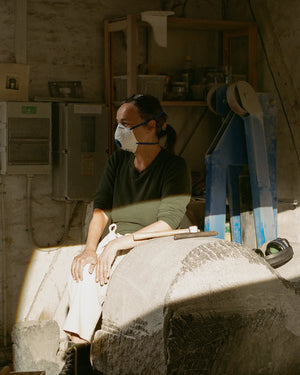
In this understanding of the challenging material, Svinding reveals a confidence in her medium, and describes the comfort that can come from the constraints it puts forward. As the artist describes, this is one of the differences between working with sculpture in stone and working with sculpture in clay: in stone, you can never put back what you take away. For some this might be the opposite of calm-inducing, but for Svinding it’s a framework that gives a sense of freedom to simplify and pare down. As the artist Constantin Brancusi once said, “simplicity is not an end in part, but we usually arrive at simplicity as we approach the true sense of things.”
Where Svinding works is also determined by the material itself. Her main studio space for clay and plaster work is connected to her home, and for stone work she shifts into a space across the street for smaller pieces, or to a stone studio in Sweden for the largest of her commissions. While each studio space is filled with works-in-progress, she notes that this is in contrast to her domestic space. Pared down simplicity is paramount in her home, while objects fill the studio for inspiration. “I like to be able to rest the eye in my home space,” she describes, in spite of—or perhaps because—her work and her domestic life are so closely connected.
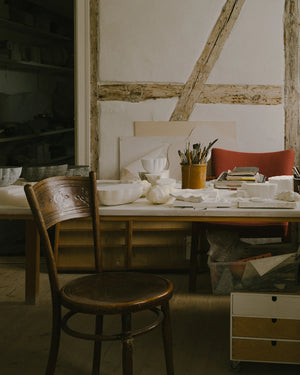
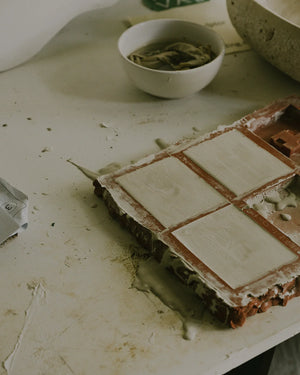
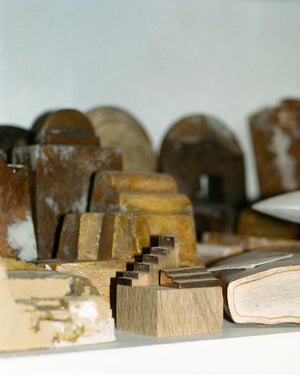
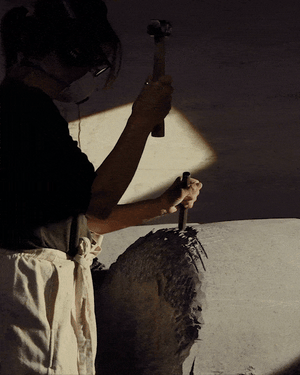
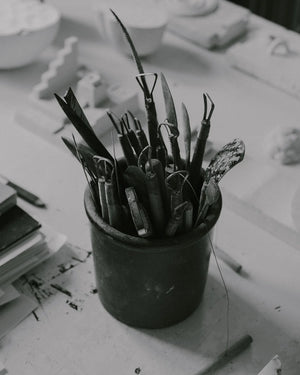
Raadvad, where her primary studio is located, is home to many other artisans and creatives. For Svinding, though, most inspiration lies within her work, which she sees as outside of time and space—not site-specific, which is refreshing in a moment in time where that term is used fairly indiscriminately in art spaces. In Svinding’s process, while visiting other artists’ workshops never fails to reward and inspire, ideas are always in progress in her mind and building off of primal forms, natural surroundings, and the built histories that are part of our day to day lives.
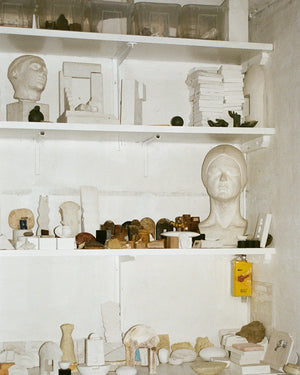
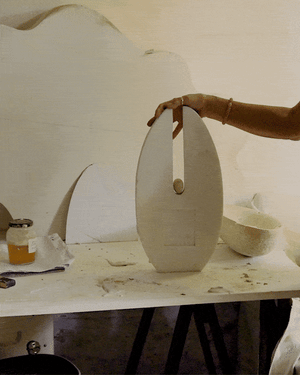
Describing her first sculpture—a piece that gently gestures to her inspirations Isamu Noguchi and Constantin Brancusi—Svinding answers that the work is “pure form” when asked if it has a name. Although it was her very first finished piece, it is a precursor to forms that she has continued to return to: egg-like and boat-like shapes that appear as primal, inherited forms from a subconscious level in Svinding’s process.
On top of these undercurrents to her work, Svinding notes that boat forms have meaning beyond this, as primitive shapes that humans have used to communicate for generations in sculpture and drawn form. “It is fundamentally human, and symbolizes movement both physically and mentally. In many cultures and religions, the ship is a symbol of the great journey from birth to death.” The shape, no matter how abstractly produced, brings a feeling of ascent to the forms that Svinding creates from this storied material—finding softness in the hard, and working with the natural limitations that working with stone insists on.
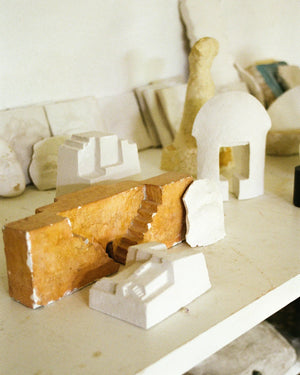

In the physical, tactile work with her hands that defines Svinding’s practice, each decision she makes engages every one of the senses. To paraphrase the way in which Noguchi once described the power of sculpture, this process gives meaning to the space it is present in. In doing so, it also connects us across time and space through the materiality of stone itself. As she describes, her work exists “outside of time and space,” and as such is a powerful vehicle with which to bring craft and tradition from the past firmly—and softly—into contemporary space.
